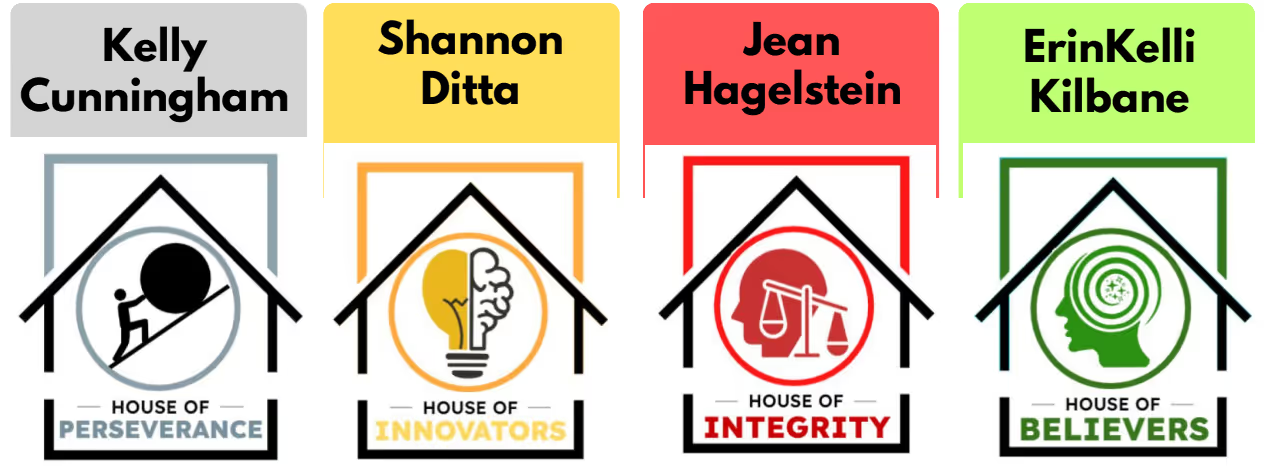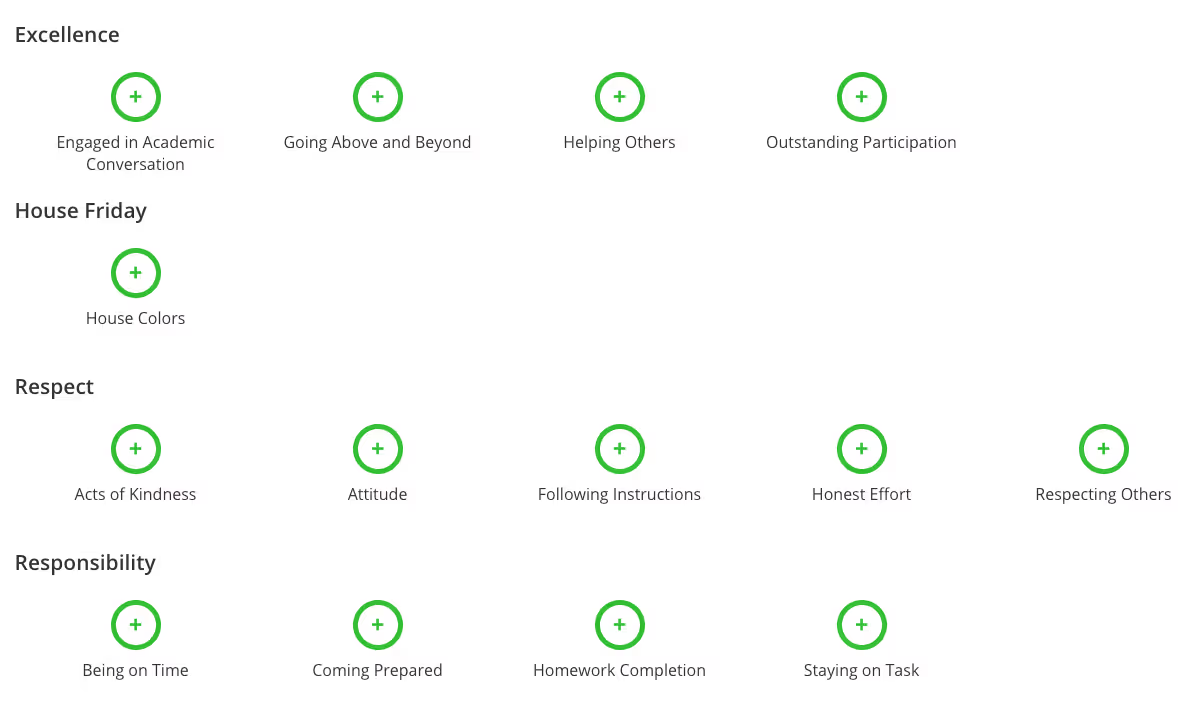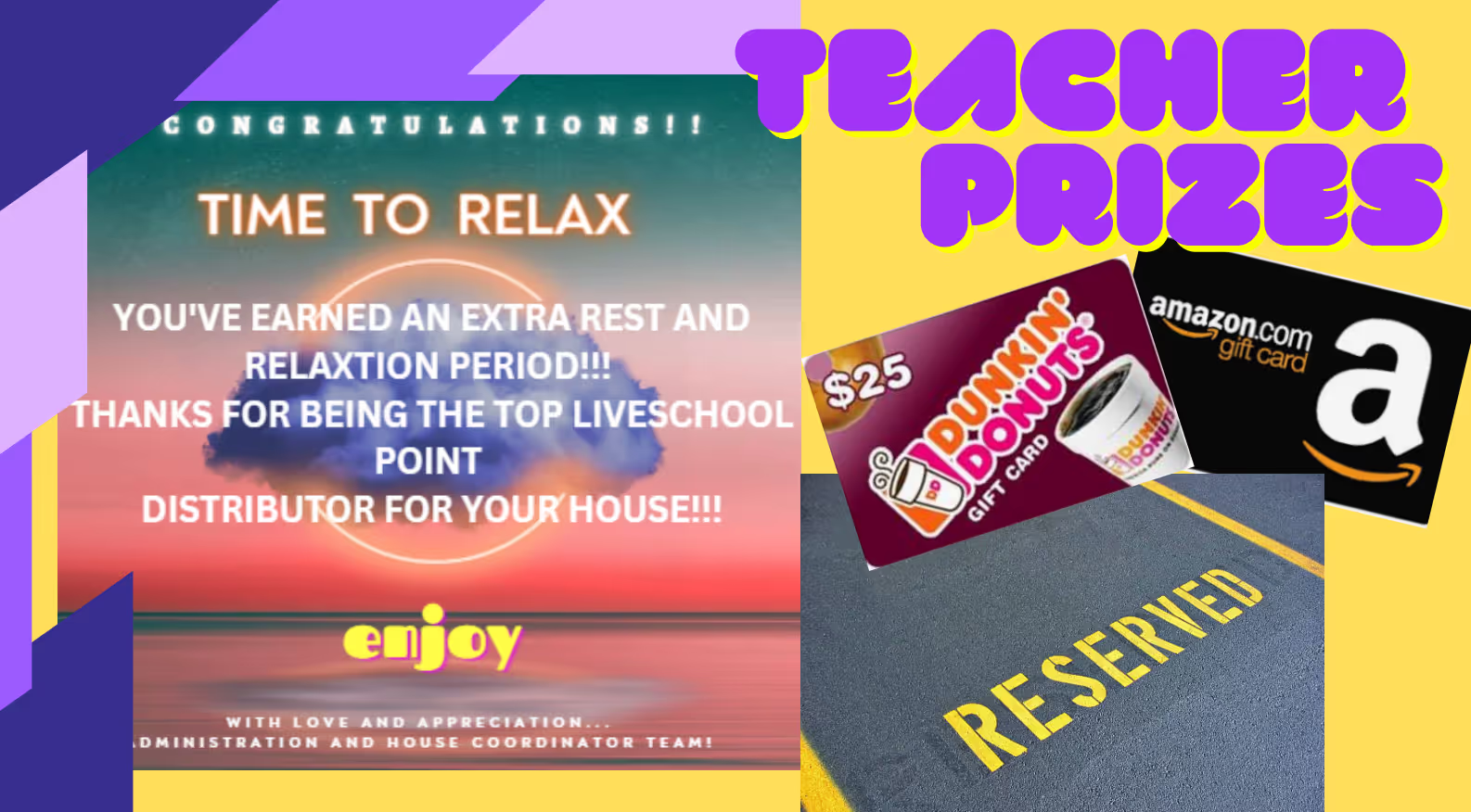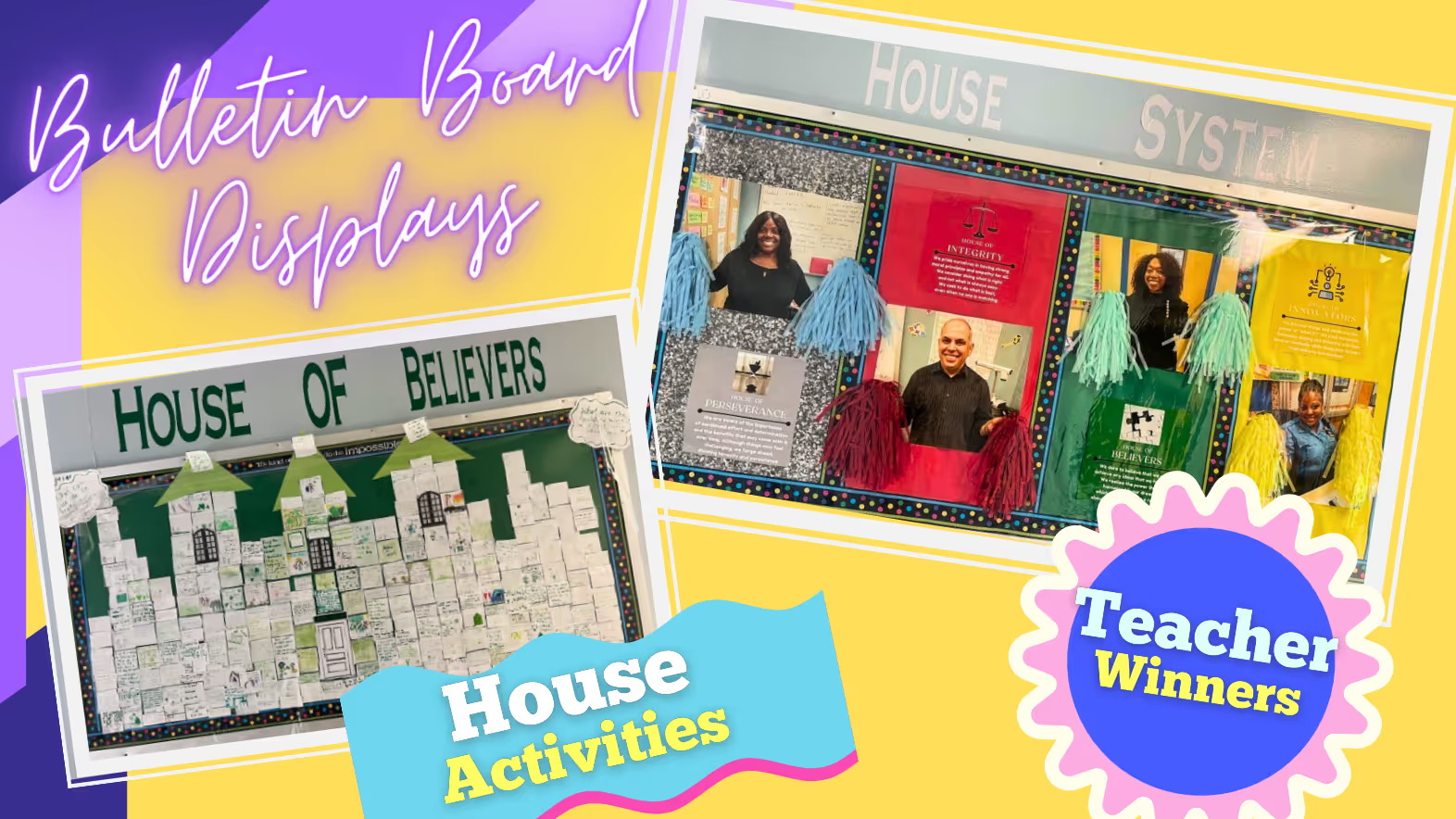
How to improve the mental health of your students by increasing the PBIS buy-in amongst your staff.


Track inventory in your school and classroom rewards stores, offer Amazon-style shopping to students, and more!
Launch a school-wide behavior and rewards system that's motivational for students and easy for teachers.
Create camaraderie and friendly competition with a school-wide House Points system. Join an interactive demo to learn more!

Track behavior, motivate students, and promote a positive culture – all in one easy platform.


PSIS 119 (The Glendale) was going through the PBIS motions.
They had the systems, they had the tools, and they had the structure…but they didn’t totally have the buy-in.
Sure, staff and students knew about their program. Points were being earned and rewards were being redeemed.
But it was all happening too infrequently to really shape the culture. It was in the background.
Going digital helped their program truly soar.
They were able to make their large school feel like a small community.
They were able to create a positive and friendly competitive environment.
They were able to involve ALL stakeholders in their culture.
Let's see how they did it ⬇️
It was a program that staff used but didn’t really change the behaviors and actions of the members of the community.
Inconsistent implementation was also leading to inconsistent results with students as they were striving to create relationships with all of their students. Everyone didn’t feel like they had a staff member they could go to.
Principal Asia Robinson-Etkins decided some things needed to change in year two for the school to really soar. The program had success but the Rubric, Points, Houses, and Rewards were all being driven by the administration.
The potential was there, but the sphere of influence needed to expand to unlock it. That’s why she started by recruiting some help and they turned that potential into:
Let’s start by looking at the impact that positive reinforcement was having on students' mental health at The Glendale.
Lorem ipsum dolor sit amet, consectetur adipiscing elit, sed do eiusmod tempor incididunt ut labore et dolore magna aliqua. Ut enim ad minim veniam, quis nostrud exercitation ullamco laboris nisi ut aliquip ex ea commodo consequat. Duis aute irure dolor in reprehenderit in voluptate velit esse cillum dolore eu fugiat nulla pariatur.
Block quote
Ordered list
Unordered list
Bold text
Emphasis
Superscript
Subscript

Track inventory in your school and classroom rewards stores, offer Amazon-style shopping to students, and more!
Launch a school-wide behavior and rewards system that's motivational for students and easy for teachers.
Create camaraderie and friendly competition with a school-wide House Points system. Join an interactive demo to learn more!

Track behavior, motivate students, and promote a positive culture – all in one easy platform.


PSIS 119 (The Glendale) was going through the PBIS motions.
They had the systems, they had the tools, and they had the structure…but they didn’t totally have the buy-in.
Sure, staff and students knew about their program. Points were being earned and rewards were being redeemed.
But it was all happening too infrequently to really shape the culture. It was in the background.
Going digital helped their program truly soar.
They were able to make their large school feel like a small community.
They were able to create a positive and friendly competitive environment.
They were able to involve ALL stakeholders in their culture.
Let's see how they did it ⬇️
It was a program that staff used but didn’t really change the behaviors and actions of the members of the community.
Inconsistent implementation was also leading to inconsistent results with students as they were striving to create relationships with all of their students. Everyone didn’t feel like they had a staff member they could go to.
Principal Asia Robinson-Etkins decided some things needed to change in year two for the school to really soar. The program had success but the Rubric, Points, Houses, and Rewards were all being driven by the administration.
The potential was there, but the sphere of influence needed to expand to unlock it. That’s why she started by recruiting some help and they turned that potential into:
Let’s start by looking at the impact that positive reinforcement was having on students' mental health at The Glendale.
I never understood how much fun you could have at work!
Students at The Glendale take a survey 3x a year that asks a simple question: “Do you feel like you have an adult you can go to at your school if you need help?” That question has a big impact on how successful a student can be in school.
It’s a leading indicator for improving behavior, academics, and mental health overall. It’s the kind of question you ask when you really want to educate the whole child.
In year one, when PBIS and House System structures were being developed but buy-in was only so-so, 62% of students answered “yes” to that question.
A year later, after the team’s plan was put into action and staff were using LiveSchool 23% more often…76% of students at The Glendale answered “yes” that they did feel like they had an adult they could go to if they needed help.
That’s 14% more students in school who feel safe, respected, encouraged, and supported. There is no truer measure of your program’s success than that!
To see how they created all of those positive interactions, we need to introduce Asia’s team of House Coordinators.

Principal Robinson-Etkins knew that if she wanted the program to become sustainable she needed to expand the leadership structure. She also knew that by naming four staff members as House Coordinators she could greatly expand the staff buy-in to the program.
She named a coordinator for each House to help run the program, answer questions, and troubleshoot issues as they arise.
The four coordinators also had some leeway to shape the values that would be the foundation of their Houses. By doing so they could both add a personal touch to the makings of the House and gather input from students and staff as to what they wanted their House to represent.
Kelly Cunnigham’s House would be focused on the importance of continuous effort and determination. She wanted her students to forge ahead when things became challenging, always showing tenacity and grit.
Shannon Ditta’s House would lean into the inherent power students can create when they ask the question “What if?” She wanted her students to challenge themselves and learn by doing.
Jean Hagelstein’s House prided itself in having strong moral principles and showing empathy towards its peers. She wanted her students to focus on what was right, not what was easy.
ErinKelli Kilbane’s House would be for the dreamers, those that believed they could achieve. She wanted her students to know that a dream could be a reality if they believed and had the courage to act upon it.
Now that they had House Coordinators, Asia, and her team needed to find a way to get the rest of the staff on board with implementing PBIS.
The team decided to focus its efforts on increasing staff fidelity in three core areas:
The coordinators would plan and lead in-house Professional Development to share best practices and explain how to implement the program effectively. This included the basics like:
The team knew that it is very difficult to follow a program if you had no input in the planning process. That’s why they met with the staff to gather student reward ideas and to identify what student behaviors they felt should be prioritized at The Glendale.

The team also decided that the best way to incentivize staff to participate would be to use the same principles they were using to appeal to students: rewards!

They made distributing points into a game that participating staff could be recognized with:

But the staff weren’t the only stakeholders who benefited from the team’s new plan. The student rewards were set up for Houses and for individual students to earn recognition.
They established a quarterly House competition that earned the winning House a party. Each House was assigned an administrator in addition to the Teacher Coordinator with the administrator being responsible for the House party if they won.
Individual students were awarded:
As well as classroom-level prizes that were run by their homeroom teachers. All of this improvement wasn’t just seen in teacher fidelity.
By incentivizing staff to praise and award students they created an environment where the Social-Emotional well-being of their students could thrive.

Track inventory in your school and classroom rewards stores, offer Amazon-style shopping to students, and more!
Launch a school-wide behavior and rewards system that's motivational for students and easy for teachers.
Create camaraderie and friendly competition with a school-wide House Points system. Join an interactive demo to learn more!

Track behavior, motivate students, and promote a positive culture – all in one easy platform.


PSIS 119 (The Glendale) was going through the PBIS motions.
They had the systems, they had the tools, and they had the structure…but they didn’t totally have the buy-in.
Sure, staff and students knew about their program. Points were being earned and rewards were being redeemed.
But it was all happening too infrequently to really shape the culture. It was in the background.
Going digital helped their program truly soar.
They were able to make their large school feel like a small community.
They were able to create a positive and friendly competitive environment.
They were able to involve ALL stakeholders in their culture.
Let's see how they did it ⬇️
It was a program that staff used but didn’t really change the behaviors and actions of the members of the community.
Inconsistent implementation was also leading to inconsistent results with students as they were striving to create relationships with all of their students. Everyone didn’t feel like they had a staff member they could go to.
Principal Asia Robinson-Etkins decided some things needed to change in year two for the school to really soar. The program had success but the Rubric, Points, Houses, and Rewards were all being driven by the administration.
The potential was there, but the sphere of influence needed to expand to unlock it. That’s why she started by recruiting some help and they turned that potential into:
Let’s start by looking at the impact that positive reinforcement was having on students' mental health at The Glendale.
PSIS 119 (The Glendale) was going through the PBIS motions.
They had the systems, they had the tools, and they had the structure…but they didn’t totally have the buy-in.
Sure, staff and students knew about their program. Points were being earned and rewards were being redeemed.
But it was all happening too infrequently to really shape the culture. It was in the background.
Going digital helped their program truly soar.
They were able to make their large school feel like a small community.
They were able to create a positive and friendly competitive environment.
They were able to involve ALL stakeholders in their culture.
Let's see how they did it ⬇️
It was a program that staff used but didn’t really change the behaviors and actions of the members of the community.
Inconsistent implementation was also leading to inconsistent results with students as they were striving to create relationships with all of their students. Everyone didn’t feel like they had a staff member they could go to.
Principal Asia Robinson-Etkins decided some things needed to change in year two for the school to really soar. The program had success but the Rubric, Points, Houses, and Rewards were all being driven by the administration.
The potential was there, but the sphere of influence needed to expand to unlock it. That’s why she started by recruiting some help and they turned that potential into:
Let’s start by looking at the impact that positive reinforcement was having on students' mental health at The Glendale.
You know what they teamwork makes the dream work. These articles have been written by the wonderful members of our team.

Track inventory in your school and classroom rewards stores, offer Amazon-style shopping to students, and more!
Launch a school-wide behavior and rewards system that's motivational for students and easy for teachers.
Create camaraderie and friendly competition with a school-wide House Points system. Join an interactive demo to learn more!

Track behavior, motivate students, and promote a positive culture – all in one easy platform.


PSIS 119 (The Glendale) was going through the PBIS motions.
They had the systems, they had the tools, and they had the structure…but they didn’t totally have the buy-in.
Sure, staff and students knew about their program. Points were being earned and rewards were being redeemed.
But it was all happening too infrequently to really shape the culture. It was in the background.
Going digital helped their program truly soar.
They were able to make their large school feel like a small community.
They were able to create a positive and friendly competitive environment.
They were able to involve ALL stakeholders in their culture.
Let's see how they did it ⬇️
It was a program that staff used but didn’t really change the behaviors and actions of the members of the community.
Inconsistent implementation was also leading to inconsistent results with students as they were striving to create relationships with all of their students. Everyone didn’t feel like they had a staff member they could go to.
Principal Asia Robinson-Etkins decided some things needed to change in year two for the school to really soar. The program had success but the Rubric, Points, Houses, and Rewards were all being driven by the administration.
The potential was there, but the sphere of influence needed to expand to unlock it. That’s why she started by recruiting some help and they turned that potential into:
Let’s start by looking at the impact that positive reinforcement was having on students' mental health at The Glendale.

Track inventory in your school and classroom rewards stores, offer Amazon-style shopping to students, and more!
Launch a school-wide behavior and rewards system that's motivational for students and easy for teachers.
Create camaraderie and friendly competition with a school-wide House Points system. Join an interactive demo to learn more!

Track behavior, motivate students, and promote a positive culture – all in one easy platform.


PSIS 119 (The Glendale) was going through the PBIS motions.
They had the systems, they had the tools, and they had the structure…but they didn’t totally have the buy-in.
Sure, staff and students knew about their program. Points were being earned and rewards were being redeemed.
But it was all happening too infrequently to really shape the culture. It was in the background.
Going digital helped their program truly soar.
They were able to make their large school feel like a small community.
They were able to create a positive and friendly competitive environment.
They were able to involve ALL stakeholders in their culture.
Let's see how they did it ⬇️
It was a program that staff used but didn’t really change the behaviors and actions of the members of the community.
Inconsistent implementation was also leading to inconsistent results with students as they were striving to create relationships with all of their students. Everyone didn’t feel like they had a staff member they could go to.
Principal Asia Robinson-Etkins decided some things needed to change in year two for the school to really soar. The program had success but the Rubric, Points, Houses, and Rewards were all being driven by the administration.
The potential was there, but the sphere of influence needed to expand to unlock it. That’s why she started by recruiting some help and they turned that potential into:
Let’s start by looking at the impact that positive reinforcement was having on students' mental health at The Glendale.